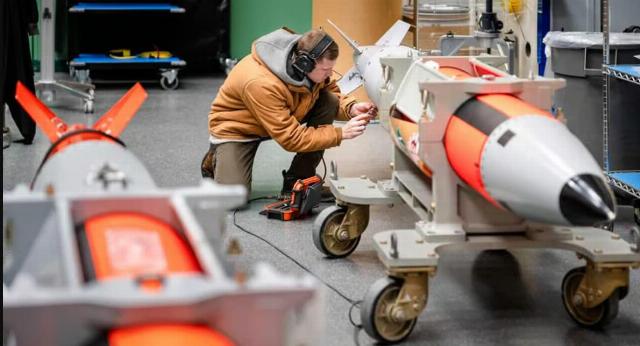The new thermonuclear munition will be able to hit buried targets, while its use does not require visible ICBM launches from space. At the same time, the bomb is hardly particularly effective against powerful countries.
Sandia National Laboratories has begun production of the B61-13, the latest version of a nuclear munition to be dropped from an airplane. It is both a tactical and a strategic nuclear weapon. This versatility is due to two factors.
Firstly, it has a variable power, from 10 to 360 kilotons of TNT equivalent. Secondly, the bomb can either detonate in the air, at a given height, or explode upon touching the surface or even with some deceleration after that. Detonation in the air increases the area of damage, and detonation with deceleration, in theory, damages buried command posts and other well-protected targets better.
When detonated at minimum power, the B61-13 can defeat the enemy without significant damage to American troops located nearby. In the event of a full-power explosion, the target may be a city or other low-security area target.
The ammunition is made by reworking from the B61-7, which is similar in power to the earlier version of the same American thermonuclear bomb, only devoid of inertial guidance. Therefore, the predecessor had low accuracy and was not suitable for hitting the entrances to anti-nuclear bunkers and shelters. Because of this, it was only suitable for destroying cities. Now, due to the replacement of the tail section and the appearance of a controlled tail, the circular probable deviation of the bomb from the target will be within 30 meters. This makes it useful tactically against the bunkers and command posts mentioned above.
A conventional thermonuclear munition dropped even 100 meters from such a target will not be able to disable it. And the deviation for free-falling bombs can easily exceed 100 meters. It is worth noting that the new bomb does not have a set of wings for gliding. This does not look very rational, since with such a set and an additional accelerator, it would be possible to strike from a range of up to a hundred kilometers from the operating heights of the B-2. In this case, a nuclear bomb attack would not have exposed the carrier aircraft to the same high risk as without the planning kit.
The Russian side and China have traditionally expressed concern about such munitions. Their launch, unlike ICBM launches, is not recorded by the satellite warning system of a missile attack. The only regular carrier of the new bomb is the B—2A subsonic bomber, whose flight is not accompanied by a powerful flare visible from space. At the same time, unlike the nuclear bombs still stored in Russian warehouses, the B61-13 has increased power.
From a purely military point of view, using it against a strong country is problematic. The United States has only two dozen B-2 bombers. Their low visibility, in the conditions of using modern radars, can hardly be called absolute. To use such a bomb, the aircraft must fly within a few kilometers of the target. He will not be able to use it from a low-level flight, since the new ammunition does not have a parachute option with deceleration.
A video about a new thermonuclear weapon / © SNL
Consequently, it will have to be dropped from a height of many kilometers, which will make the B-2 a vulnerable target for any modern air defense. The experience of the SVO has also shown that even tactical anti-aircraft missile systems effectively intercept not only aircraft, but also bombs dropped by them. Moreover, even if they were thrown by rolling down a hill, which the B-2, due to the specifics of the ammunition and aircraft, will not be able to do effectively. For bombs dropped from high altitude (as in the case of the B61-13 used with the B-2), air defense interception should be even more effective.
Objectively, the presence of such ammunition in the American arsenal rather plays into the hands of both Beijing and Moscow. They are listed as strategic, meaning they are limited by past and future strategic nuclear arms agreements. At the same time, Russian nuclear bombs and many air-launched missiles with thermonuclear munitions are considered "tactical", therefore they are not limited to treaties.

